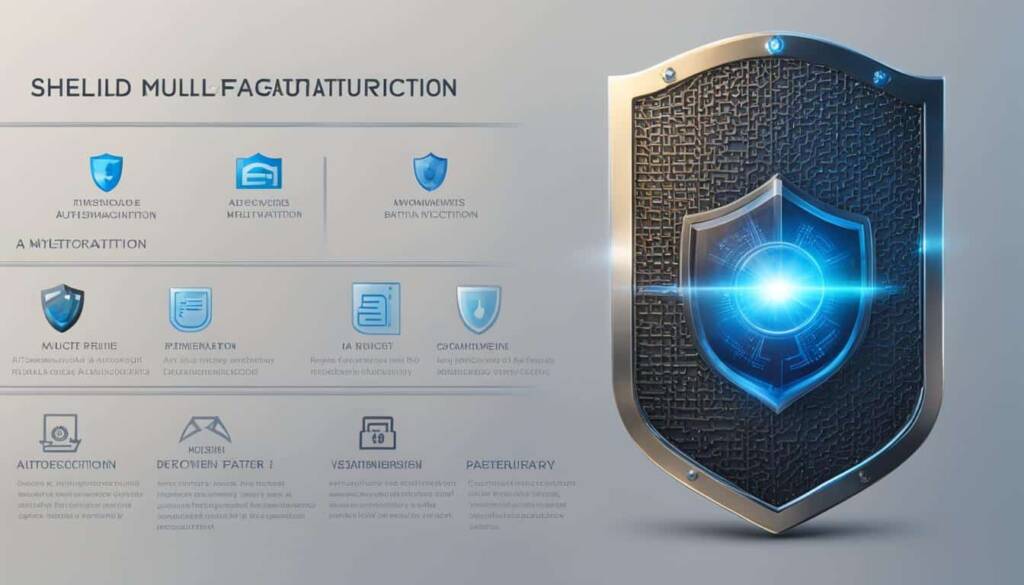Table of Contents
Multi-factor authentication is a vital component of digital security in today’s online landscape. With businesses and individuals increasingly reliant on technology for daily tasks and transactions, protecting our online presence has become more important than ever.
Multi-factor authentication enhances security measures by adding an extra layer of protection during login attempts, minimizing the risk of unauthorized access and data breaches. By requiring users to provide multiple forms of identification, such as passwords, biometric information, or authentication codes, businesses can ensure that only authorized individuals gain access to sensitive information.
Implementing multi-factor authentication improves the overall security response by actively detecting suspicious login attempts and sending alerts to individuals and businesses. This allows for effective mitigation of potential threats and minimizes the damage caused by unauthorized access.
By understanding the importance of multi-factor authentication and implementing it as a standard security practice, businesses can safeguard their digital assets and maintain trust with their customers. The combination of different authentication factors adds an extra layer of protection to online interactions, providing peace of mind in an increasingly connected world.
How Multi-Factor Authentication Works
Multi-factor authentication (MFA) is a robust security measure that enhances the protection of online accounts and sensitive information. It functions by requiring users to provide multiple forms of identification during the account registration process and authentication. By implementing MFA, businesses can significantly reduce the risk of unauthorized access and data breaches.
The multi-factor authentication process involves requesting various factors of identification from users. These factors can include:
- 1. Usernames and passwords: The traditional method of authentication that requires users to enter their unique credentials to access their account.
- 2. Cell phone devices: Users may receive verification codes via text message on their registered phone numbers to verify their identity.
- 3. Physical hardware fobs: These small devices generate unique codes that users must enter alongside their passwords to gain access.
- 4. Email addresses: Users may receive verification links or codes through their registered email addresses for additional security measures.
- 5. Mobile numbers: Similar to cell phone devices, users can receive verification codes through their mobile numbers for added authentication.
- 6. Authenticator app codes: Users can utilize authenticator apps like Google Authenticator or Authy, which generate time-based verification codes.
The verification process involves confirming these factors, alongside the password, to authenticate the user. Implementation options can vary, offering flexibility based on security requirements and user convenience. These options include:
- Two-factor authentication (2FA): This method involves using two different authentication factors, such as a password and a verification code, to grant access.
- Third-party authenticators: Businesses can utilize authentication services provided by trusted external platforms to further enhance security.
- Biometric information: Incorporating fingerprint or facial recognition technology as an authentication factor provides a seamless and secure user experience.
- Additional authentication on new devices: Requesting further verification steps, such as email or SMS confirmation, when users attempt to log in from new or unrecognized devices.
By implementing the multi-factor authentication process, businesses can significantly strengthen their security measures and protect sensitive user data. This proactive approach deters cybercriminals and minimizes the risk of unauthorized access and potential data breaches.
Quotes:
“Multi-factor authentication adds another layer of security that significantly reduces the risk of unauthorized access and data breaches.” – Security Expert
“By combining different factors of identification, multi-factor authentication ensures that only legitimate users can access their accounts, enhancing overall security.” – Cybersecurity Specialist
Benefits of Adaptive Multi-Factor Authentication
Adaptive multi-factor authentication, or adaptive MFA, is an innovative approach that addresses both security requirements and user experience by leveraging contextual user information. By incorporating business rules and user data, adaptive MFA determines which authentication factors to apply, creating a personalized and effective security solution.
By dynamically adjusting the authentication steps based on contextual information, adaptive MFA enhances security without compromising user convenience. Factors such as failed login attempts, geographical location, device used for login, and time of login attempt are taken into account to determine the appropriate level of authentication needed.
One of the main benefits of adaptive MFA is its ability to strike a balance between security and user experience. Unlike traditional MFA methods that rigidly enforce the same authentication steps for all users, adaptive MFA tailors the authentication process to individual users, allowing for a more seamless and efficient login experience.
Furthermore, adaptive MFA decreases the chances of false positives and false negatives by basing authentication decisions on contextual information. This mitigates the risk of unnecessary authentication challenges for legitimate users while increasing security posture by prompting additional authentication steps when suspicious activity is detected.
By considering contextual factors, adaptive MFA provides organizations with a contextual understanding of user behavior patterns and preferences. This enables businesses to make informed decisions and implement tailored security measures that align with users’ needs, reducing friction and enhancing satisfaction.
Enhancing Multi-Factor Authentication with Artificial Intelligence
Artificial intelligence (AI) and machine learning play a crucial role in bolstering multi-factor authentication (MFA) by leveraging advanced technology to analyze user activity and identify potential risks. By monitoring user behavior over time, adaptive authentication solutions establish baseline profiles and detect suspicious actions, such as login attempts at unusual hours or from unfamiliar locations.
Utilizing machine learning algorithms, these solutions assign risk scores to various events and dynamically adjust the authentication factors based on predefined business policies. This real-time adaptation ensures a more secure and efficient authentication process. With AI-powered MFA, organizations can proactively combat unauthorized access and minimize potential vulnerabilities.
By incorporating AI and machine learning, user activity monitoring becomes more sophisticated and accurate. These technologies enable intelligent pattern recognition, allowing businesses to stay one step ahead of evolving threats. The constant analysis of user behavior combined with the ability to factor in context-specific information significantly enhances the overall security posture.
With risk scores and dynamic factor adjustment, AI-driven MFA optimizes user experience by striking a balance between stringent security requirements and seamless authentication. The ability to tailor the authentication process to individual users based on their unique risk profiles ensures a smoother and frictionless login experience while maintaining a high level of security.
FAQ
What is multi-factor authentication?
Multi-factor authentication is a security measure that requires users to provide multiple forms of identification during the account registration process. This can include usernames, passwords, cell phone devices, physical hardware fobs, email addresses, mobile numbers, or authenticator app codes.
How does multi-factor authentication work?
Multi-factor authentication works by verifying multiple factors of identification along with the password. This can involve the use of usernames, passwords, cell phone devices, physical hardware fobs, email addresses, mobile numbers, or authenticator app codes. Implementation options include two-factor authentication, third-party authenticators, biometric information, or requesting additional authentication on new devices.
What is adaptive multi-factor authentication?
Adaptive multi-factor authentication, or adaptive MFA, uses business rules and user information to determine which authentication factors to apply. It balances security requirements with the user experience by dynamically adjusting the authentication steps based on contextual information such as failed login attempts, geographical location, device used for login, and time of login attempt.
How does adaptive multi-factor authentication enhance security?
Adaptive multi-factor authentication utilizes artificial intelligence and machine learning to analyze user activity, establish baseline user profiles, and detect unusual behavior. This allows it to monitor trends, identify suspicious activity, and assign risk scores to events. Authentication factors are adjusted in real time based on business policies, providing a more secure and efficient authentication process.












